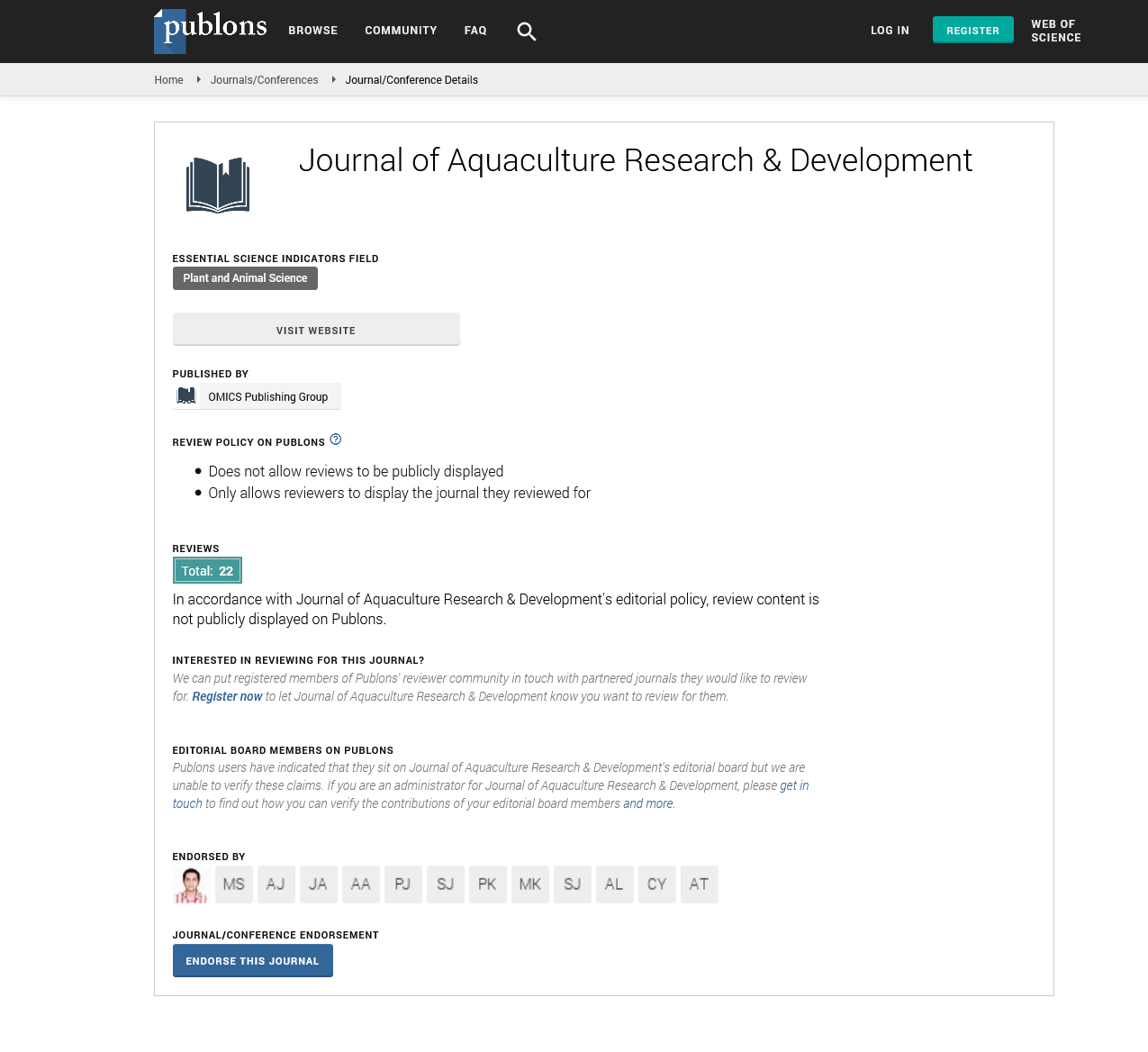Indexed In
- Online Access to Research in the Environment (OARE)
- Open J Gate
- Genamics JournalSeek
- JournalTOCs
- Scimago
- Ulrich's Periodicals Directory
- Access to Global Online Research in Agriculture (AGORA)
- Electronic Journals Library
- Centre for Agriculture and Biosciences International (CABI)
- RefSeek
- Directory of Research Journal Indexing (DRJI)
- Hamdard University
- EBSCO A-Z
- OCLC- WorldCat
- Scholarsteer
- SWB online catalog
- Virtual Library of Biology (vifabio)
- Publons
- MIAR
- University Grants Commission
- Euro Pub
- Google Scholar
Useful Links
Share This Page
Journal Flyer

Open Access Journals
- Agri and Aquaculture
- Biochemistry
- Bioinformatics & Systems Biology
- Business & Management
- Chemistry
- Clinical Sciences
- Engineering
- Food & Nutrition
- General Science
- Genetics & Molecular Biology
- Immunology & Microbiology
- Medical Sciences
- Neuroscience & Psychology
- Nursing & Health Care
- Pharmaceutical Sciences
Perspective - (2025) Volume 16, Issue 8
Life Stage and Reproductive Performance under Culture Conditions
Roberto Garcia*Received: 29-Jul-2025, Manuscript No. JARD-25-30160; Editor assigned: 31-Jul-2025, Pre QC No. JARD-25-30160 (PQ); Reviewed: 14-Aug-2025, QC No. JARD-25-30160; Revised: 21-Aug-2025, Manuscript No. JARD-25-30160 (R); Published: 28-Aug-2025, DOI: 10.35248/2155-9546.25.16.1024
Description
A considerable number of studies focus on understanding how different stages of aquatic species’ life cycles such as breeding, spawning, larval rearing and juvenile development are influenced by culture conditions. These investigations play a crucial role in advancing full-cycle aquaculture, where fish and shellfish are bred and raised entirely under controlled conditions. This is especially important for developing new species for cultivation or adapting existing ones to local environmental settings. By examining various factors affecting reproduction and early growth stages, researchers provide essential insights to improve hatchery efficiency, enhance survival rates and promote uniform growth, all of which contribute to more sustainable and productive aquaculture systems. One common research focus lies in evaluating broodstock nutrition and its impact on reproductive performance.
Brood stock diets are often tested prior to spawning to determine how different formulations influence key reproductive parameters such as egg quality, fertilization success and hatching rates. Since the nutritional status of parent fish directly affects gamete quality, these studies typically assess various protein, lipid and micronutrient sources in the diet. Improvements in egg composition, such as higher lipid content or better fatty acid profiles, have been linked to greater embryo viability and larval robustness. Following spawning, researchers measure fertilization rates by examining the percentage of eggs that successfully receive sperm and progress toward development. Hatching success, the proportion of fertilized eggs that develop into viable larvae is another critical metric often reported. Larval survival during the earliest days post-hatching is a particularly vulnerable phase in the life cycle and a frequent subject of study. Many experiments investigate how different larval feeding regimes affect survival and growth rates. Early larvae often require highly digestible, nutrient-rich feed formulations that meet their specific digestive and metabolic needs.
Research has analyzed a range of live feeds such as rotifers and Arteria as well as micro diets composed of processed ingredients. Some studies focus on the timing and frequency of feeding, seeking to optimize feed availability to maximize survival and minimize wastage. Other investigations examine environmental factors influencing larval development, such as photoperiod management. By adjusting light exposure durations and intensities, researchers aim to simulate natural conditions or manipulate physiological processes to enhance growth or synchronize development stages. Water quality parameters such as temperature, dissolved oxygen and ammonia concentration during larval rearing are also closely monitored. Even slight deviations from optimal ranges can significantly reduce survival or cause developmental abnormalities. Hence, controlled experiments vary water quality factors individually or in combination to identify thresholds and tolerances specific to species or larval stages. Findings from these studies guide hatchery protocols to maintain conditions conducive to healthy larval development. As larvae transition into nursery or juvenile phases, research shifts toward examining growth and survival under varying feed regimes and stocking densities. Feed formulations designed for juveniles often contain balanced nutrients that support rapid growth and good health. Experiments compare traditional feeds with novel ingredients or supplementation strategies aimed at improving feed conversion efficiency and immune response. Stocking density is a critical variable as overcrowding can induce stress, reduce oxygen availability and increase disease susceptibility. Investigations measuring growth rates, survival percentages and feed utilization under different densities help establish recommended stocking practices that balance production goals with animal welfare.
In addition to performance metrics, morphological assessments during juvenile development provide valuable information. Many studies report measurements such as length, weight and condition factor to track growth uniformity within populations. High uniformity is desirable for commercial production as it facilitates predictable harvest timing and market sizing. Alongside growth data, researchers also monitor the incidence of deformities or skeletal malformations, which can arise from nutritional deficiencies, poor water quality or genetic factors. Early detection and minimization of deformities improve overall stock quality and economic returns. Several contributions explore reproductive physiology more deeply by analyzing gonad histology, sex ratio dynamics and maturation timing. Histological examination of gonads enables detailed observation of developmental stages, revealing abnormalities or delays caused by culture conditions. Understanding gonad development is essential for optimizing spawning schedules and ensuring reproductive success. Some studies also investigate factors influencing sex differentiation, which can be critical for species where sex ratios affect production or market value. Manipulating environmental variables such as temperature or photoperiod has been shown to shift sex ratios in certain species and this knowledge supports strategies to achieve desired population structures. Furthermore, research into maturation timing helps determine the optimal age or size for brood stock selection to maximize reproductive output.
Citation: Garcia R (2025). Life Stage and Reproductive Performance under Culture Conditions. J Aquac Res Dev. 16:1024.
Copyright: �© 2025 Garcia R. This is an open access article distributed under the terms of the Creative Commons Attribution License, which permits unrestricted use, distribution, and reproduction in any medium, provided the original author and source are credited.

